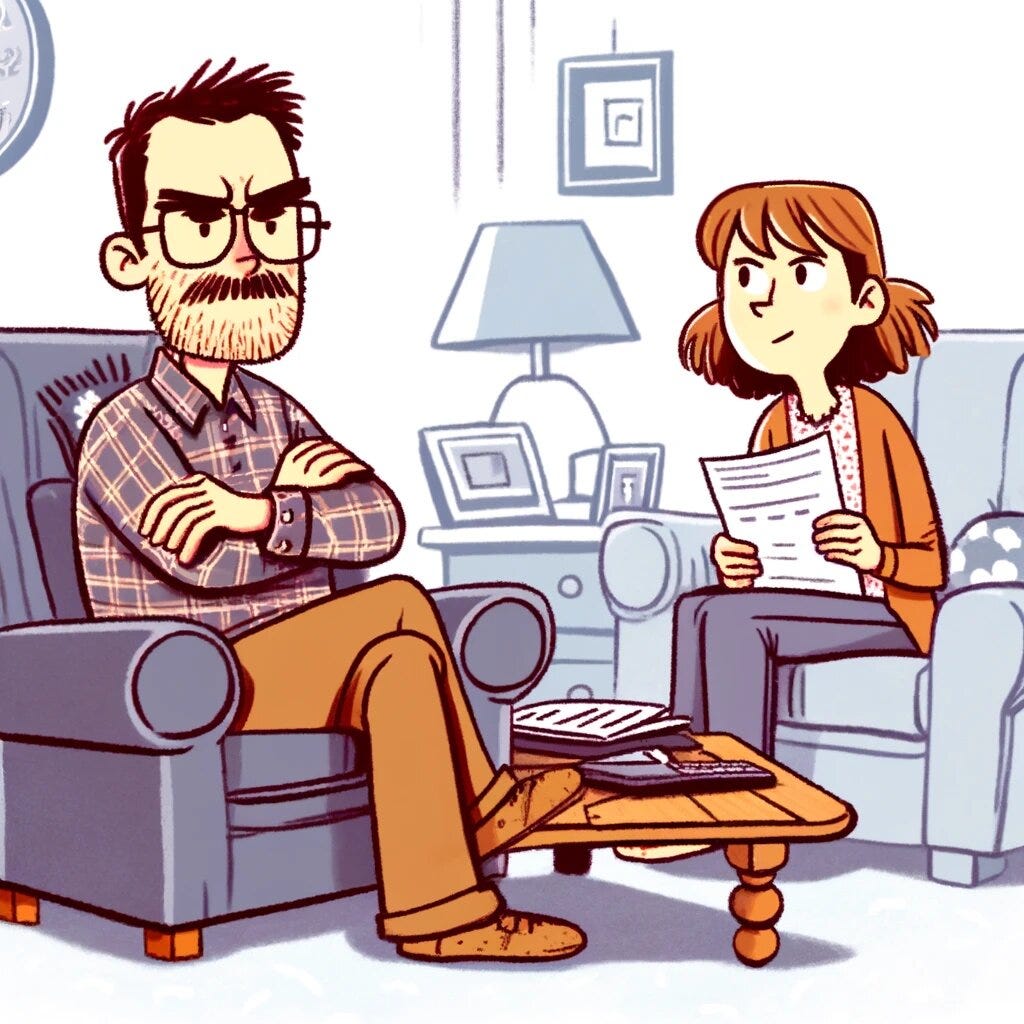Perhaps the most famous example of Passive-Aggressive behavior was the classic and hilarious movie, "The Odd Couple." Felix and Oscar are two divorced guys who move in together. What results is a nightmare of a friendship in which Oscar, the slob, and Felix, the "neat freak," drive each other crazy, especially when Felix gets revenge on Oscar through endless passive acts of revenge. I highly recommend this old movie if you want to have fun while learning about passive-aggressive behavior.
There is no better way to drive people crazy than the silent treatment. Suppose your partner says or does something that hurts you, and you withhold your direct reaction. In that case, you are a perfect example of passive-aggressive behavior. Instead, you may do such things and withdraw into silence, get attention by pouting but refusing to express why, forget to complete important tasks, and sabotage expressions of your anger. It's important to stress that the person acting in passive-aggressive ways is often unaware of their behavior. Recognizing and acknowledging this behavior is the first step towards changing it.
Think about the terminology of "passive-aggressive" behavior. It's the expression of aggression. Aggression is typically defined in psychology as behavior that is intended to cause harm or pain to another individual. Anger, frustration, or a desire to assert dominance are frequently the driving forces behind this physical or verbal behavior. In some cases, aggression can be a response to perceived threats or a means of self-defense.
In psychology, passive behavior is a tendency to avoid acting or expressing oneself. It can involve a lack of assertiveness, avoidance of confrontation, and a tendency to go along with others' wishes without expressing one's needs or desires. This behavior can stem from low self-esteem, fear of conflict, or a learned response to past experiences. On the other hand, passive-aggressive behavior involves indirect expressions of negativity, such as sarcasm, procrastination, or silent treatment, often used to express anger or frustration without directly confronting the issue.
Join the definitions, and we will see passive-aggressive behavior.
For instance, imagine a coworker making sarcastic remarks or backhanded compliments. They hide their frustration or disagreement by making harmless comments such as, "Oh, great job on that presentation. Did you even rehearse?" or "Wow, you're on time for once." These harmless comments are sarcastic and arouse resentment. Another example could be a friend who constantly cancels plans at the last minute, leaving you disappointed and unsure of their true intentions.
Another common example is when someone agrees to a request but procrastinates or performs. The individual may not say "no," but their actions convey their unwillingness to cooperate.
These indirect expressions of negativity can be deeply frustrating and damaging to relationships. They create confusion and hinder open communication. To put it bluntly, they can drive other people' crazy.' If confronted, the individual often denies the entire thing and claims you misunderstand their intention. This cycle of misunderstanding and denial can harm any relationship, underscoring the need to address passive-aggressive behavior.
Petulant and childish behavior stems from an underlying hostility or resentment that a person feels unable or unwilling to confront. A passive-aggressive individual will act rather than be straightforward about their displeasure or disagreement. This behavior can lead to a breakdown in communication, resentment, and a toxic atmosphere in relationships, ultimately leading to their deterioration.
The worst example is "silent treatment," where the person avoids direct communication, leaving the other party to guess the cause of their displeasure. A spouse in couples therapy has expressed their utter exasperation when their partner walks out of the room rather than discuss the situation, which is a source of conflict. Passively withdrawing into silence is extremely aggressive and hostile. In such situations, it's important to remain calm, assert your feelings, and encourage open dialogue to resolve the issue.
The root of passive-aggressive behavior often traces back to a childhood environment where the open expression of negative emotions was discouraged or punished. As a result, individuals learn to suppress their feelings and find covert ways to release their frustrations. If left unaddressed, this behavior can erode trust and relationship communication, as the underlying issues remain unresolved, and the indirect hostility creates a toxic atmosphere. Understanding this origin can help us approach passive-aggressive behavior with empathy and understanding.
Insecurity and low self-esteem resulting from a difficult childhood also play a crucial role in developing passive-aggressive behavior. When individuals lack confidence in asserting themselves, they feel incapable of expressing their needs or standing up for themselves. This lack of self-assurance leads them to express their displeasure through actions that convey their feelings without requiring them to face the potential backlash of direct communication.
Do you have experience with passive-aggressive behavior? Let's chat about it. If you recognize these patterns in yourself or someone you know, it might be beneficial to seek professional help. A therapist or counselor can provide guidance and support in understanding and addressing this behavior.





Thanks Doc. A great summary of passive/aggressive behavior. Could you do one on Positive Communication/Non-Violent Communion skills.
Or maybe you already have?